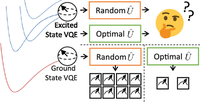Publication Date: May 24th, 2023
Authors: Seonghoon Choi and Artur Izmaylov(CQIQC Member).
Abstract:
The variational quantum eigensolver (VQE) remains one of the most popular near-term quantum algorithms for solving the electronic structure problem. Yet, for its practicality, the main challenge to overcome is improving the quantum measurement efficiency. Numerous quantum measurement techniques have been developed recently, but it is unclear how these state-of-the-art measurement techniques will perform in extensions of VQE for obtaining excited electronic states. Assessing the measurement techniques’ performance in the excited state VQE is crucial because the measurement requirements in these extensions are typically much greater than in the ground state VQE, as one must measure the expectation value of multiple observables in addition to that of the electronic Hamiltonian. Here, we adapt various measurement techniques to two widely used excited state VQE algorithms: multistate contraction and quantum subspace expansion. Then, the measurement requirements of each measurement technique are numerically compared. We find that the best methods for multistate contraction are ones utilizing Hamiltonian data and wave function information to minimize the number of measurements. In contrast, randomized measurement techniques are more appropriate for quantum subspace expansion, with many more observables of vastly different energy scales to measure. Nevertheless, when the best possible measurement technique for each excited state VQE algorithm is considered, significantly fewer measurements are required in multistate contraction than in quantum subspace expansion.
Related links

